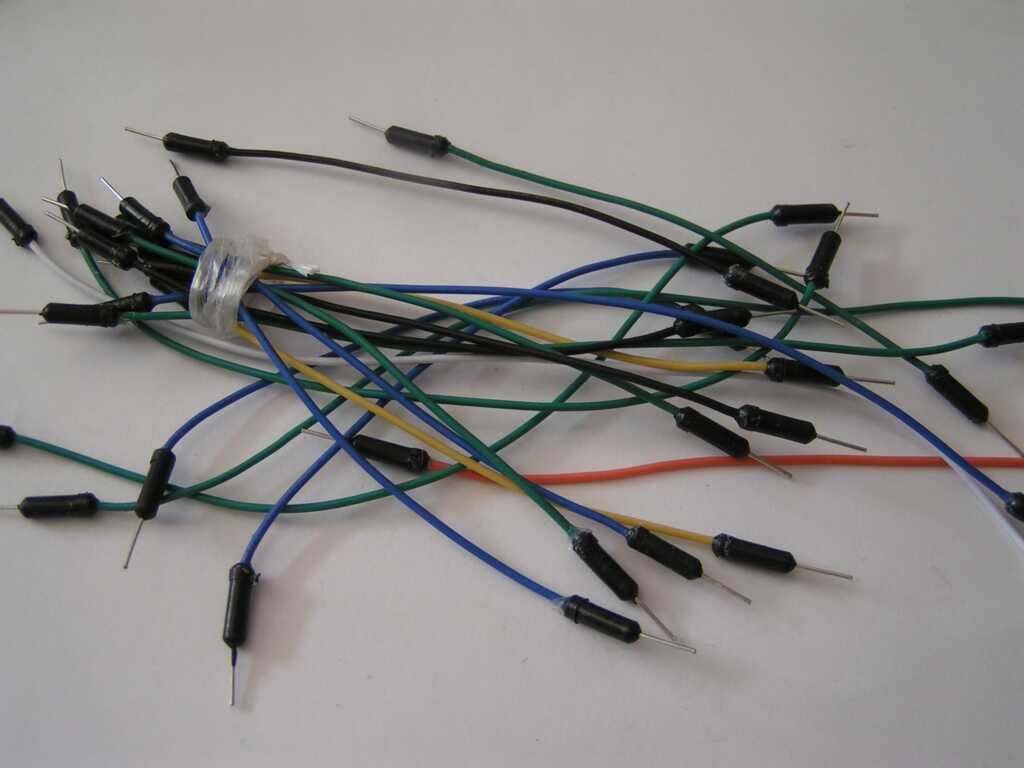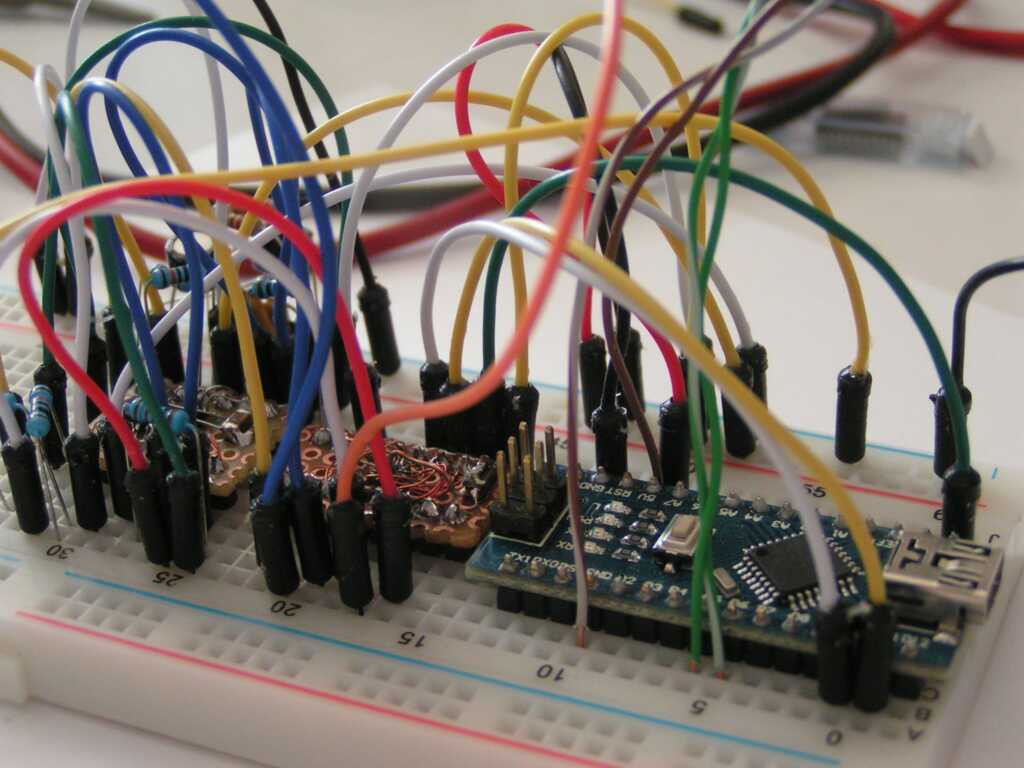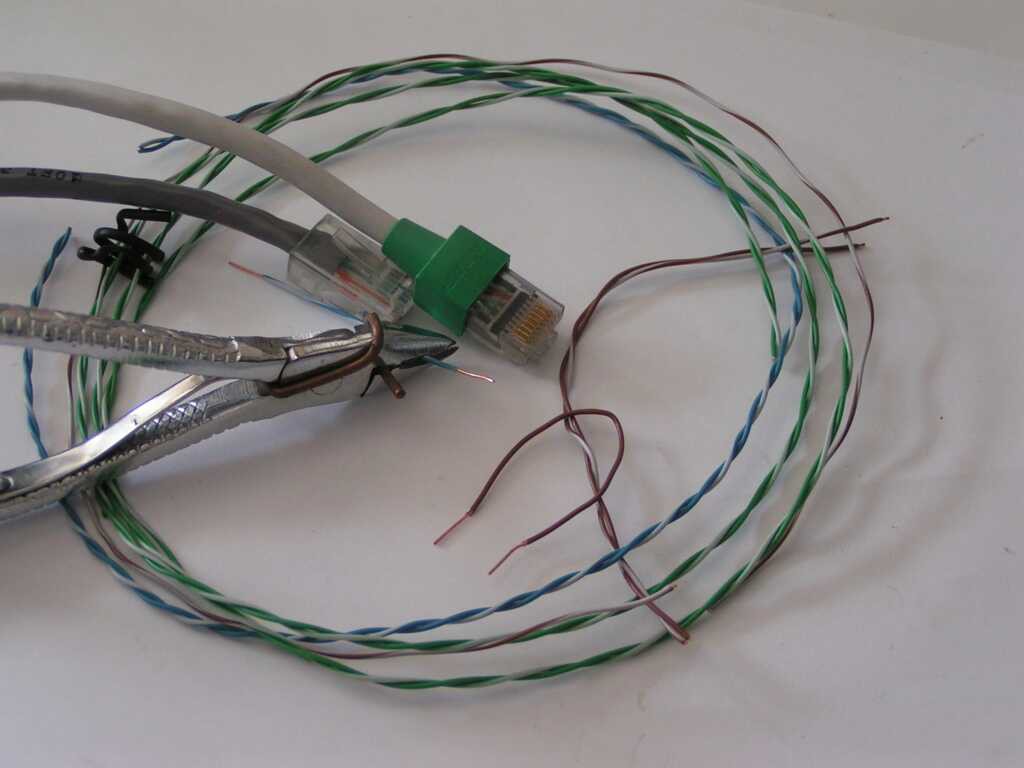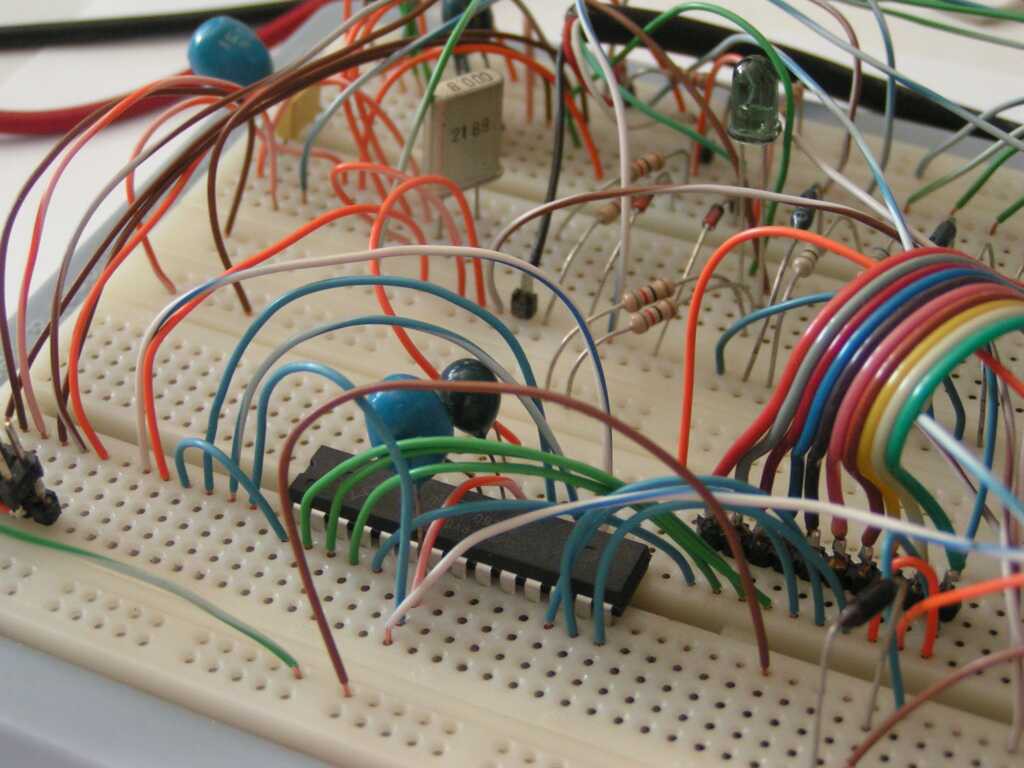You can buy breadboard jumping wires like these ones:

and your breadboard will look something like this

Or, you can peal a broken LAN cable:
 The wire clipper is a custom made tool that peal the wires at just the right length to insert them in a breadboard. The thick copper wire twisted around the clipper is to always keep the clippers jaws at a small distance, so to cut only the plastic cover of the wire, and not the copper core.
The wire clipper is a custom made tool that peal the wires at just the right length to insert them in a breadboard. The thick copper wire twisted around the clipper is to always keep the clippers jaws at a small distance, so to cut only the plastic cover of the wire, and not the copper core.
If you use the twisted pairs as breadboard jumping wires, the breadboard will look lighter, like this:

Oxidation of the bare copper wire ends doesn't seem to be a problem. The last picture is from a few years old project, and it's still working.
LAN wires are virtually free, and a few meters/feet will last you for many, many projects. Also, you will always find 8 different colored wires inside a piece of network LAN cable, you can clip them at any desired length, and if it happens that you need twisted cable, they are already twisted for you.
Cat5e cables usually run between 24 and 26 AWG, while Cat6, and Cat6A usually run between 22 and 26 AWG.
The one I am using is 0.50mm diameter, which means AWG24. It's the same thickness as the terminals of a glass body 1n4148 diode. Some resistors have even thinner legs, of only 0.35mm (AWG27).
 RoGeorge
RoGeorge
Discussions
Become a Hackaday.io Member
Create an account to leave a comment. Already have an account? Log In.
in the days before UTP network cables 2 or 3 pair telephone cable worked a treat as well. The larger bundles of phone cable I found to be slightly thinner gauge and didn't stick in the breadboard so well.
Are you sure? yes | no